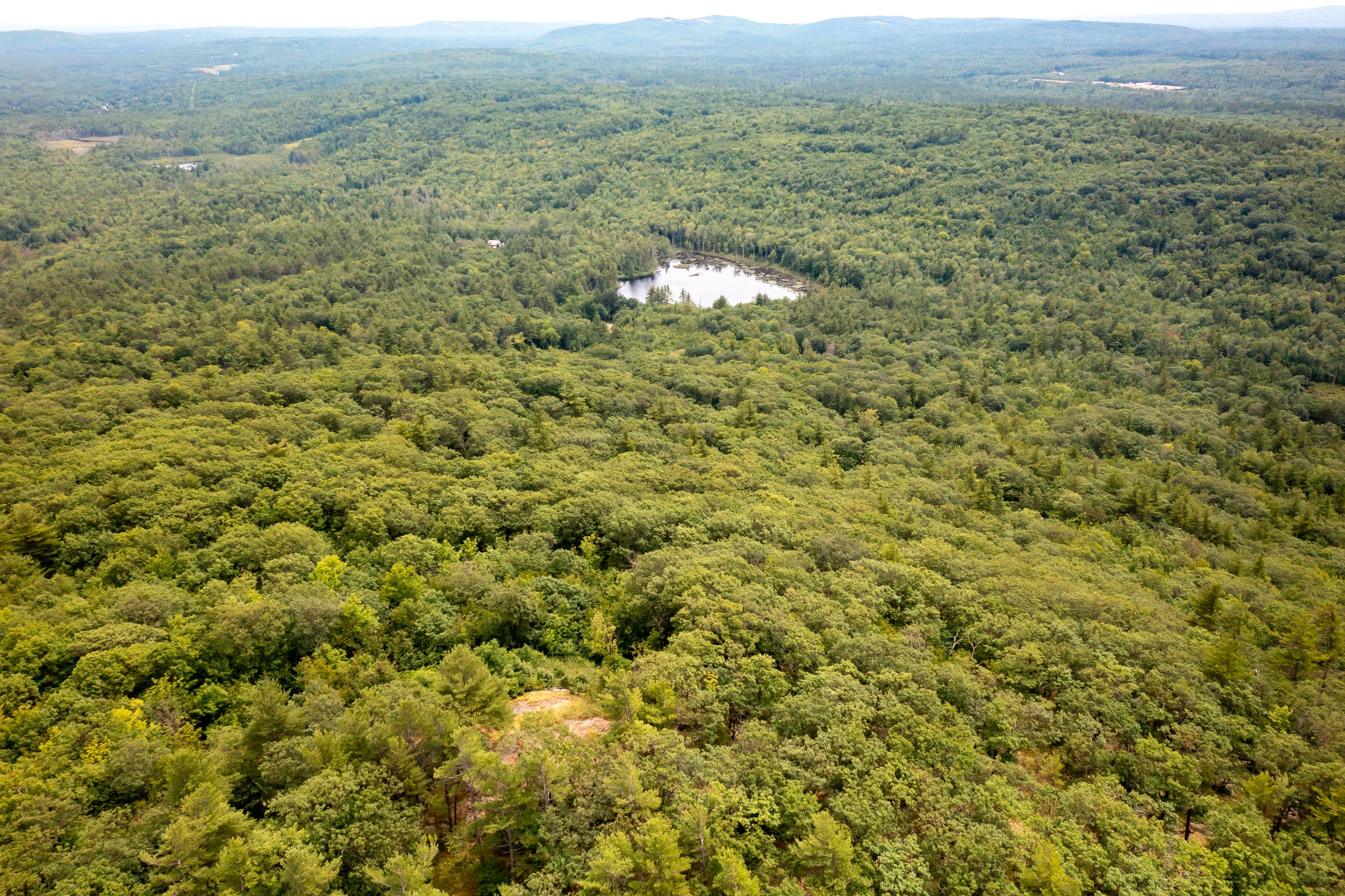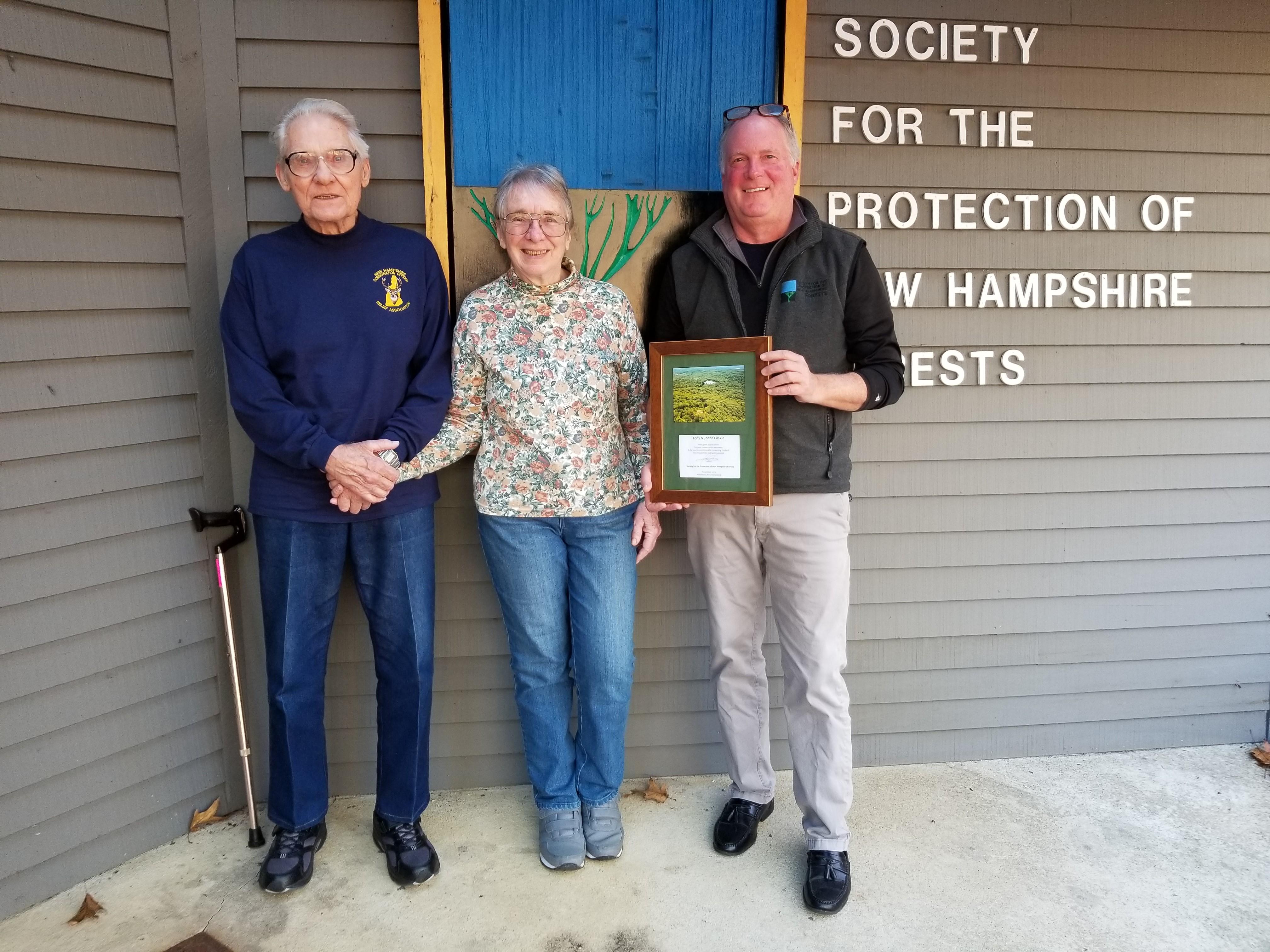Land Protection in the Moose Mountains Fills Gap in 7,000-Acre Block of Conservation Land

The land protects a diversity of habitat types, including hemlock-hardwood-pine forests and open water/beaver pond.
PRESS RELEASE
The Society for the Protection of New Hampshire Forests and the Coskie family recently joined together to protect 70 acres of forestland and wetlands in Middleton surrounded by the sprawling peaks known as the Moose Mountains. This conservation success was made possible by a bargain sale of a conservation easement from the Coskie family, in addition to support from local and statewide funders.

The property is an important component of a 7,000-acre block of abutting and nearby conservation land, including the Ellis R. Hatch, Jr. (Jones Brook) Wildlife Management Area (1,920 acres owned by NH Fish and Game), the Copple Crown Forest (732 acres conserved by the Lakes Region Conservation Trust), the Middleton Town Forest, and the Forest Society’s 2,744-acre Moose Mountains Reservation. The property is also located within a few miles of the Birch Ridge Community Forest, which borders Merrymeeting Lake in New Durham (2,015 acres owned by Southeast Land Trust). Much of this land is sustainably managed for forest products, watershed protection, recreation, and wildlife habitat for a variety of species.
The property features varied terrain, from a relatively level, southern area surrounding a beaver pond to steep, rocky slopes at higher elevations toward the north. The land protects a diversity of habitat types, including hemlock-hardwood-pine forests and open water/beaver pond.
While the Coskie family will continue to own the land and manage it for sustainable forestry, the conservation easement protects the natural features forever.
“The Coskies have been great neighbors to our Moose Mountains Reservation, and we are privileged to hold a conservation easement on their land,” said Jack Savage, president of the Society for the Protection of New Hampshire Forests. “The property abuts our 2,744-acre Moose Mountains Reservation on three sides, making it a strategic addition to the conserved lands in the area.”
“Living in the shadow of Phoebe’s Nable Mountain, we love meeting so many interesting visitors. Usually, they are looking for the hiking trails, and GPS directs them down our driveway,” said Joann Coskie. “Discovering our home, their first inclination is to leave quickly; we’d prefer they stop and talk. We learn where they are from, why they’ve come, and we share our story of reclaiming a neglected property. Of course, our other visitors are the many animals, birds, amphibians, butterflies, and dragonflies. Every day, we thank God for the beauty that greets us every morning."
A tributary of the Branch River flows through the beaver pond located within the southern extent of the conservation easement, a portion of which extends onto the Forest Society’s adjacent land, further contributing to the water quality in the upper reaches of the Piscataqua-Salmon Falls Watershed. The entirety of this conservation easement sits within the Coastal Conservation Focus Area of the New Hampshire Coastal Watershed Conservation Plan.
The Coskies manage their property as a Certified NH Tree Farm and find great enjoyment watching the wildlife.
“We see ourselves more as caretakers than landowners,” adds Coskie. “When we first bought this property, it was used as a dumping site, and now, after decades of care, we are pleased to live here and to have successfully protected this land.”
Local and statewide funders were important to completing this conservation easement, including $55,000 from the Land and Community Heritage Investment Program (LCHIP), $25,000 from the NH State Conservation Committee’s Moose Plate Grant Program, $15,000 from the Great Bay Resource Protection Partnership Land Protection Transaction Grant Program, and $11,500 from the Adelard A. and Valeda Lea Roy Foundation. Together, these funds were used to purchase the conservation easement and cover the Forest Society’s transaction expenses as well as long-term stewardship costs.
“I want to thank the Coskies for their generosity in making this possible through a bargain sale of the easement, along with the funders and donors who helped make it possible,” Savage said.
“LCHIP is delighted to support the conservation of this property, which protects working forests, wildlife habitat, water quality, and public spaces,” said Land and Community Heritage Investment Program executive director Paula Bellemore. “The fact that thousands of acres of protected land surround this parcel amplifies this positive impact.”
#####
ABOUT THE FOREST SOCIETY
The Forest Society is a private, non-profit land trust and forestry organization established in 1901. It currently holds 797 conservation easements statewide permanently protecting more than 135,000 acres of New Hampshire’s landscapes. The Forest Society now owns 196 forest reservations constituting more than 63,000 acres in 105 New Hampshire communities.
About the New Hampshire’s Land and Community Heritage Investment Program
The New Hampshire Land and Community Heritage Investment Program (LCHIP) is an independent state authority providing matching grants to New Hampshire’s municipalities and non-profits, helping to preserve the state’s most important natural, cultural, and historic resources and ensure their contribution to the economy, environment, and quality of life in New Hampshire. Since 2000 LCHIP has awarded 564 grants, invested $58 million in 198 NH communities, conserving 237,000 acres of land, and rehabilitating 200 historic structures. Learn how LCHIP is helping to preserve and protect New Hampshire’s heritage at LCHIP.org, by following LCHIP_NH on Instagram, or Facebook.
